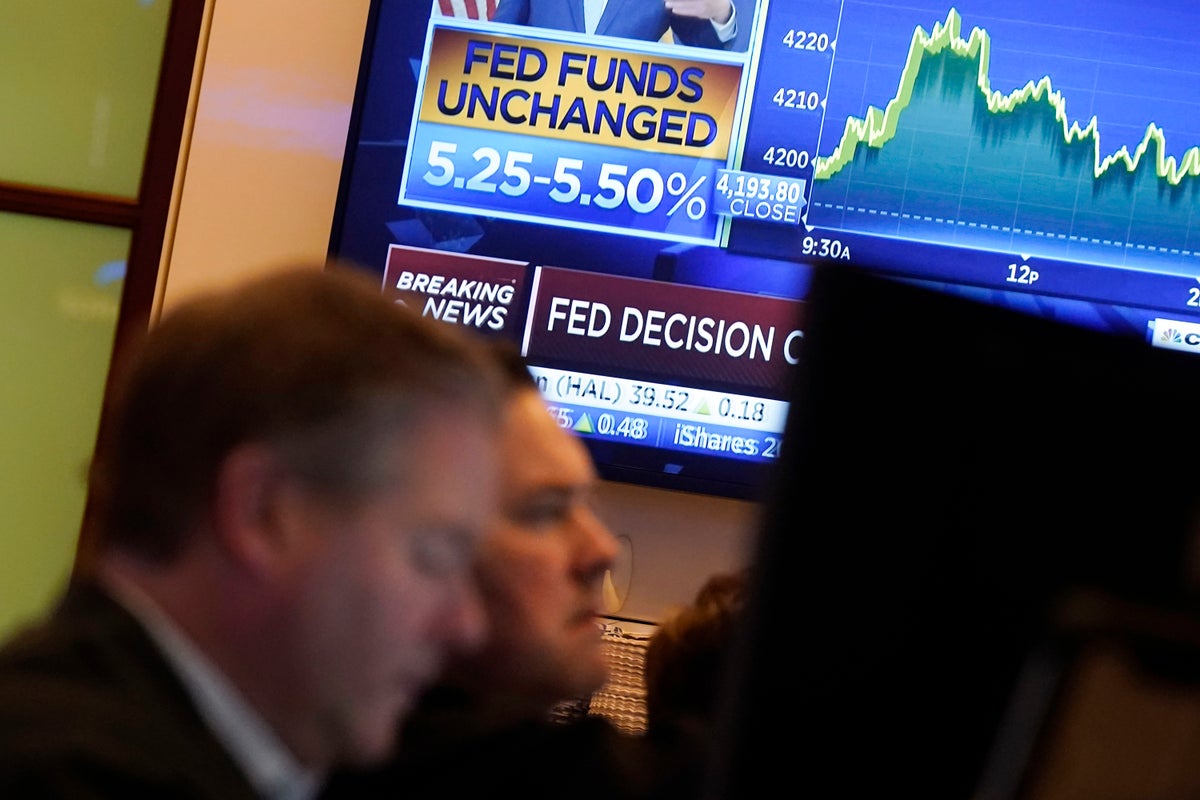
The Federal Reserve, tentatively pleased with progress it's made in fighting inflation, has declared what amounts to a ceasefire: The Fed stopped raising interest rates in July, after imposing an aggressive 11 hikes since March 2022, to take time to see how the economy would respond.
So far, so good.
Inflation has kept slowing, and the economy has withstood the strain of the accumulated higher borrowing costs. Hope is growing that the central bank can achieve a rare “soft landing” by cooling the economy just enough to tame inflation without causing a recession. The financial markets, in fact, seem increasingly optimistic that the Fed can soon begin cutting rates, which would lighten borrowing costs for consumers and businesses.
On Thursday, the Labor Department is expected to report that underlying inflationary pressures eased further in December. Excluding volatile food and energy costs, “core” prices likely rose 0.2% from November, according to a survey of forecasters by the data firm FactSet, down from a 0.3% rise the previous month. And compared with 12 months earlier, core prices are thought to have risen 3.8% in December, down from a 4% year-over-year increase in November.
Economists pay particular attention to core prices because, by excluding costs that typically fluctuate sharply from month to month, they are a better guide to the likely path of inflation.
But the war against inflation isn’t won just yet.
Overall inflation is thought to have edged higher last month, putting it further above the Fed's 2% target. According to the FactSet survey, economists think the broadest measure of consumer prices rose 0.2% from November to December and 3.2% from 12 months earlier. Both figures would mark a modest acceleration from the 0.1% October-November increase and the 3.1% year-over-year rise in November.
Those upticks wouldn't likely cause concern. The index of overall inflation tends to bounce around from month to month.
Still, it helps explain why, despite steady economic growth, low unemployment and healthy hiring, polls show many Americans are dissatisfied with the economy. That disconnect, a likely issue in the 2024 elections, has puzzled economists and political analysts. One thing has become increasingly clear, though: The public is exasperated with prices that are still 17% higher than they were when the inflation surge began in early 2021.
Overall, the progress against inflation has been significant. A year ago, the 12-month rise in the consumer price index was 6.5% — way down from a four-decade high of 9.1% in June 2022 but still painfully high. Now, it's just above 3%. And wage gains have outpaced inflation in recent months, meaning that Americans' average after-inflation take-home pay is up.
There are solid reasons for optimism that inflationary pressure will continue to recede in the coming months.
The Federal Reserve Bank of New York reported this week, for example, that consumers now expect inflation to come in at just 3% over the next year, the lowest one-year forecast since January 2021. That’s important because consumer expectations are themselves considered a telltale sign of future inflation: When Americans fear that prices will keep accelerating, they will typically rush to buy things sooner rather than later. That surge of spending tends to fuel more inflation.
But that nasty cycle does not appear to be happening.
And when Fed officials discussed the inflation outlook at their most recent meeting last month, they noted some hopeful signs: An end to the supply chain backlogs that had caused parts shortages and inflation pressures and a drop in rent costs, which is beginning to spread through the economy.
Still, John Min, chief economist at the foreign exchange firm Monex USA, suggested that “the easy part’’ was slowing inflation from 9% to around 3%. Going “the last mile” to reach the Fed’s 2% target could prove the hardest stretch.
The December U.S. jobs report that was issued last week contained some cautionary news for the Fed: Average hourly wages rose 4.1% from a year earlier, up slightly from 4% in November. And 676,000 people left the workforce, reducing the proportion of adults who either have a job or are looking for one to 62.5%, the lowest level since February.
That is potentially concerning because when fewer people look for work, employers usually find it harder to fill jobs. As a result, they may feel compelled to sharply raise pay to attract job-seekers — and then pass on their higher labor costs to their customers through higher prices. That's a cycle that can perpetuate inflation.







